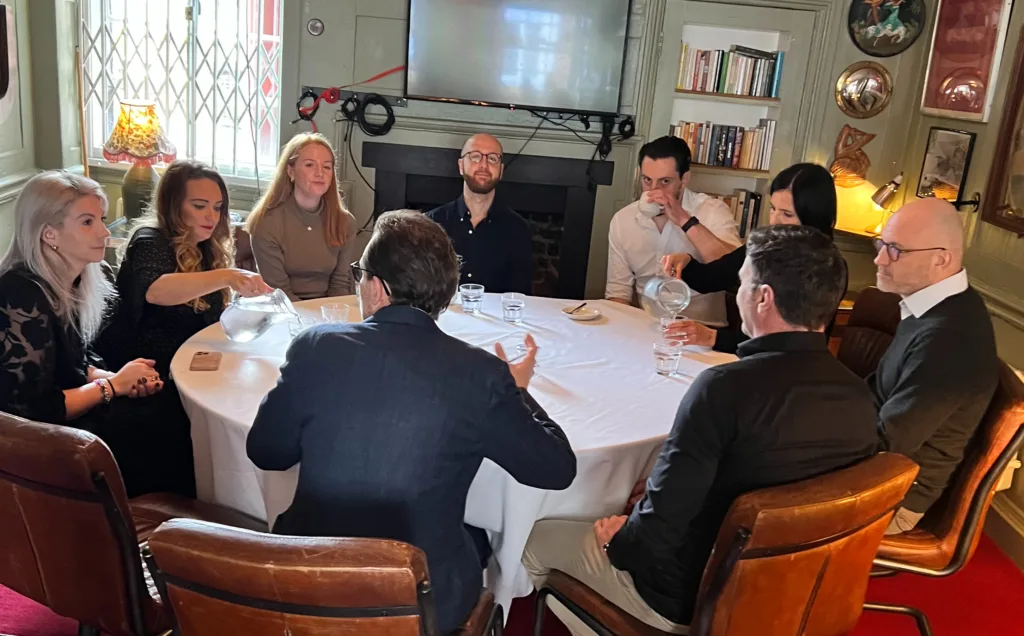What is the role of creativity in contextual advertising? And how are advancements in machine learning and AI driving the contextual agenda forward?
These were the topics up for debate in the second half* of a roundtable discussion hosted recently by New Digital Age (NDA) in association with Smartframe Technologies. NDA’s editor Justin Pearse chaired the discussion and was joined by: Andy Ashley, Global Marketing Director, and Gregor Smith, Global Advertising Sales Director, both of Smartframe Technologies; Tamar Ayres, Digital Team Lead, The7Stars; Emma Moorhead, General Manager, Wavemaker UK; Freddy Clapson, Executive Director & Global Head of Programmatic, team x; Rebecca Burchnall, Chief Planning Officer, PHD; Lydia Martin, Media Strategist, The Kite Factory; Steve Taylor, Chief Strategy Officer, VCCP Media; and Daniel Sichel, EMEA Hub and Performance Lead at Zenith.
Setting the scene for the discussion around creativity, Ayres said: “Contextual creativity is really about being there at the moment where there is intent to purchase and putting your brand at the front of the consumer’s mind with relevant creative. For example, I was speaking to a major travel site recently about working with fashion brands and tailoring creative according to which kind of trip the user has booked. So, when customers are searching for beach holidays, they could be targeted with swimwear ads; alternatively, if the customer is looking to book a week in the Cotswolds in October, they might be more interested in seeing an ad for a warm coat.”
Moorhead outlined how new tech solutions are helping to deliver a new era of contextual advertising, informed by traditional techniques: “What’s really exciting is that, thanks to technology, we can now do so much with the creative. We can adapt messaging based on live signals like the time of day or the weather conditions, making it more relevant and impactful to the consumer.
“There have been occasions in the past where we’ve known in advance about headlines that were going to appear and we’ve worked with the news publisher to place client messaging next to the story, that makes a relevant point or has some fun with the story. When a creative agency, media agency and publisher work hand in glove like that, the results can be really powerful and impactful.”
Smith of Smartframe agreed that Dynamic Creative Optimisation (DCO) can be effective as part of a contextual campaign, but only in certain circumstances.
““Our solution focuses on combining the context of images and webpages with the viewer’s location for ad targeting, but we can deliver DCO where a client requests it. We did a campaign during the Football World Cup for a sports betting firm, where we updated the creatives in real time, depending on the match that was on and the live score of the game. Where the offering is changing in real time, DCO can be quite effective, but if you are an advertiser with only brand or product, it’s not really as relevant.”
Taylor, too, felt that DCO was of limited value in most cases and could be a red herring in terms of thinking about contextual in 2023:“I really struggle with the idea of DCO. Outside of very exceptional circumstances, it’s much more important to be able to look at the context of the page, look at the context of the user and deliver a brand message relevant to those people.”
He added: “It’s possible that, in the near future, AI might help us better understand the context of the person and actually create assets on the fly that are more meaningful for that environment.”
Higher intelligence?
With AI very much in the news at the moment, Martin commented that contextual advertising solutions were likely to evolve rapidly.
“The availability and sophistication of AI-based tools has progressed a lot and, as a result, media owners are now able to offer contextual targeting solutions in formats like CTV and digital audio. That might mean brands targeting ads during content that has a tone of hope, optimism or celebration, or factual content, or some other contextual signal. There are now solutions available for scanning content across all different types of media, which is opening up new opportunities for advertisers.”
Sichel commented that AI may be the vital piece of the puzzle in making other ad tech solutions much more useful: “The danger we face as digital marketers at the moment is the lack of signals, so we’re having to build out whatever seed audience behaviours we have access to. I’m interested to see how AI positively improves the assumptions that have been made against those seed audiences to build out much larger targeting audience segments.
“For years now, I’ve sat through sessions with media partners that talk about capabilities, such as targeting with location data. If AI can be leveraged to build audiences in the millions so that we can actually make location targeting a commercially viable opportunity, that’s going to be very interesting.”
However, Burchnall warned an over-reliance on AI from a creative point of view could quickly lead to “a sea of sameness”.
She said: “AI is a really interesting approach to making some of the things we do a bit more seamless, a bit safer and a bit more inclusive. But it also has dangers. I don’t think copywriters should be particularly concerned at the moment because it’ll be a long time before AI can write smart, distinctive brand advertising.
“As an industry, we’ve done a lot of good work to ensure that brands that compete in exactly the same space can pull themselves apart in the consumer’s mind. Think McDonalds, Burger King and Five Guys, for example. If they all were to rely on AI-generated creative, they would quickly lose all brand distinctiveness.”
Clapson argued that, rather than expect an AI-fuelled revolution, we can extrapolate the future role of AI based on how it is being used today.
“If you look at custom bidders and automated bidding in DSPs, AI has already been around for five, six years. The future of AI is most likely going to be an expansion of what AI already is. Google has made a lot of money from automated bidding within DV360. They’ll add new contextual targeting signals whenever it’s likely to be profitable for them. AI is becoming more mainstream and the user base is expanding, but there’s still a lot of education to be done around how advertisers can leverage it effectively.”
* Read part one of this discussion here.









